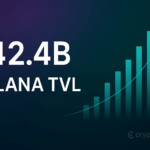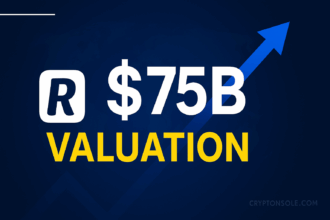Key Insights from State Street’s 2025 Digital Assets Outlook
- In its new 2025 Digital Assets Outlook, State Street reports that a majority of institutional investors expect their digital asset exposure to double over the next three years.
- Moreover, over half of survey respondents project that by 2030, 10–24% of their institutional investments will be tokenized.
- State Street also identifies that private equity and private fixed income assets are expected to be among the first classes to undergo tokenization.
What the Survey Says: Numbers & Sentiment
- About 60% of institutional investors plan to increase their allocation to digital assets within the next year.
- In the survey, 52% cited transparency as a leading benefit of digital assets, 39% cited faster trading, and 32% pointed to lower compliance costs.
- Nearly 40% of institutions already maintain a dedicated digital assets team or business unit.
- A significant share of institutional respondents expect cost savings above 40% in operations from tokenization and related infrastructure.
Why Tokenization, and Why Now?
Efficiency & Liquidity
Tokenizing traditionally illiquid8 assets—such as private equities or private credit—can unlock 24/7 trading, fractional ownership, and faster settlement, making them more accessible and flexible.
Transparency & Data Access
On-chain tokenization provides real-time visibility into holdings, which helps with auditing, valuation, compliance, and oversight.
Cost & Operational Gains
Institutions view tokenization as a way to reduce overhead in reconciliation, settlement, and intermediaries, potentially translating into meaningfulq savings in time and fees.
Strategic Positioning
As digital assets move from experiment to core portfolio allocation, early movers may capture structural advantages in developing infrastructure, compliance models, and market share.
Challenges & Risks Ahead
- Regulatory Clarity: Clear, harmonized global regulation for tokenized assets (especially securities) is still evolving.
- Valuation & Price Discovery: Illiquid or nascent token markets may face valuation disputes or lack of price transparency.
- Custody, Security & Custodial Risk: Secure custody infrastructure for tokenized assets remains critical and complex.
- Liquidity Constraints: Tokenization does not guarantee liquidity—some tokenized offerings may still suffer from sparse trading or concentration risk.
- Integration & Technical Maturity: Tokenization requires interoperation among traditional4 systems and blockchain protocols, which can be challenging.
Academic research underscores some of these concerns: for example, studies show that many tokenized real-world assets still face liquidity bottlenecks, low trading volumes, and concentration in limited1 participants.
What to Watch Next
| Indicator | Why It Matters |
|---|---|
| Institutional capital flows into digital assets | Will confirm whether doubling expectations materialize |
| Tokenized product launches in private markets | Especially private equity, credit, real estate |
| Regulatory frameworks and pilot programs | Especially in major jurisdictions like the U.S., EU, Hong Kong |
| Custody & infrastructure partnerships | To support secure tokenized assets and compliance |
| On-chain volume / market metrics for tokenized assets | To track liquidity, usage, and adoption |
Bottom Line
State Street’s 2025 report signals a moment of transition: institutions are increasingly seeing digital assets and tokenization not as speculative experiments but as foundational elements of future portfolios. The expectation that 10–24% of investments could be tokenized by 2030, led by private equity and fixed income, points to a potential rearrangement in how assets are held, traded, and governed over the coming decade.
CTOK2Z9D












